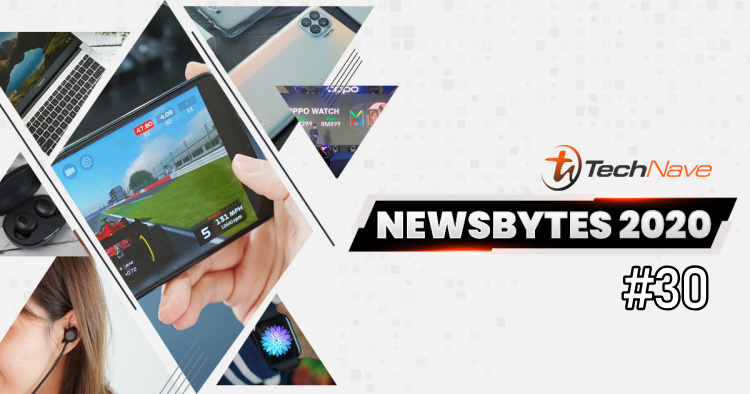
Welcome back TechNavers and NewsByters, in this issue of TechNave NewsBytes 2020 #30, Samsung starts the ball rolling with featurettes on their Samsung Galaxy Z Fold2 for Work and Play, their Samsung AI Forum 2020 and the reasons why Samsung thinks Bigger is better when it comes to Your TV.
For Huawei, their Huawei Mate40 series sold-out during launch in China while Lenovo launched their EdVision program with Microsoft to help educational institutions in Malaysia.
For this issue’s Special, find out How to Safeguard your Smartphone and Become a Cybersecurity Wiz with Samsung. Check it out at the bottom.
For our Misc Announcements:
- Xiaomi’s annual growth in Malaysia increased by 113% YoY in Q3 of 2020
- MDEC supports Malaysia's Budget 2021
- AMD Q3'20 x86 Share Report shows increase
- New 3DMark DirectX Raytracing feature released
SAMSUNG ANNOUNCEMENTS
The Samsung Galaxy Z Fold2 for Work and Play
Picking up right where the Galaxy Fold left off, the Galaxy Z Fold2 continues to build on Samsung’s best-in-class foldable innovations. Combining the power of its larger Cover Screen, immersive Main Screen, and a versatile camera system, the device delivers a wide range of productivity and entertainment experiences that defy expectations. All these groundbreaking functionalities are made possible by one foundational feature – the expanded Flex mode.
The Galaxy Z Fold2 is available in Mystic Black and Mystic Bronze at RRP RM 7,999. From now until 30th November, customers who purchase Galaxy Z Fold2 will be entitled to amazing gifts - a pair of Buds Live worth RRP RM699 and One-time Inner Screen Crack Protection1. On top of that, customers can purchase the Z Fold2 case at 20% off for every purchase of Galaxy Z Fold2 device.
Samsung on their Samsung AI Forum 2020
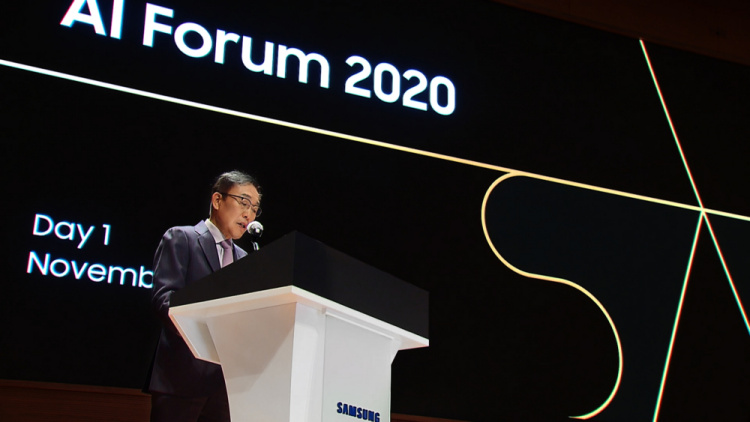
The Samsung AI Forum is an annual event that brings together globally renowned experts in the industry as well as across academia to serve as a platform with which to disseminate the very latest in AI trends, technologies and research. On November 2, Dr. Kinam Kim, Vice Chairman & CEO of Device Solutions at Samsung Electronics, commemorated the start of the first day of the AI Forum 2020 by delivering an opening speech that highlighted how AI technologies have shown remarkable progress over the years.
He went on to note that, given these changes, many are expecting AI to address the issues brought on by the recent pandemic, but highlighted that since AI bases its models on massive amounts of real-life data and simulations, the task of modeling the current pandemic and other natural disasters with AI was a daunting one.
At this year’s AI Forum, Samsung introduced their inaugural Samsung AI Researcher of the Year awards with the view to identify prominent emerging researchers in the field from around the world and to support their research activities. Check out the Samsung Malaysia Newsroom for more information on the Samsung AI Forum 2020.
The reasons why Samsung thinks Bigger is better when it comes to Your TV

Today’s consumers want a bigger, more immersive picture. Which may explain why, according to recent consumer segmentation research conducted by Samsung Electronics, consumers rank screen size as a major reason to upgrade to a new TV, and why this year, experts predict that sales of 75-inch and larger TVs will increase by 17 percent, and sales of 8K TVs will increase by 110 percent.
If you’re thinking of upgrading to a big-screen TV, here are a few points to consider before making your purchase. If you’re unsure how a big-screen TV would look in your home, here’s a handy idea: try using painter’s tape to create an outline of the TV size you’re thinking of buying on your wall for reference. When buying a big-screen TV, make sure that the display you choose will offer you the most immersive experience possible.
Samsung’s QLED 8K TVs combine a high resolution with cutting-edge innovations like the 8K Quantum Processor to offer users the ultimate in terms of both image quality and in-home entertainment. To know more about Samsung 2020 QLED TVs, please visit their site.
HUAWEI ANNOUNCEMENTS
Huawei Mate40 series sold-out during launch in China

Recently the Huawei Mate40 series smartphones were launched in China where they were sold out in just 28 seconds. The newest additions to the HUAWEI family also recorded sold out units on official HUAWEI e-commerce platforms, marking users’ continued trust in HUAWEI and the products they deliver.
“We are truly honoured to receive continued support from our users. Just ten years ago, HUAWEI had only 1 million users. Today, we’ve reached the milestone of having 1 billion HUAWEI users, in which a vast majority of 700 million are smartphone users,” said Richard Yu, HUAWEI Consumer Business Group (CBG) CEO. “While we continue to face our fair share of challenges, we are fairly confident that we’ll be able to pull through, driven and motivated by the support of our consumers.”
LENOVO ANNOUNCEMENTS
Lenovo EdVision + Microsoft to help educational institutions in Malaysia

Lenovo Malaysia recently launched their EdVision program in collaboration with Microsoft where individuals and schools in Malaysia will be provided with access to online resources that will help them through their education transformation journey, as well as prioritized access to the latest solutions in education tech.
Especially for the school partners, Lenovo will work with Microsoft to host workshops for the school committee teams, ranging from school principals to teachers from selected primary and secondary schools, and provide tech consultation along their digital transformation process.
Schools and industry partners who join the EdVision program will work collaboratively with Lenovo and Microsoft to promote the digital transformation of education, by participating in press conferences and other outreach activities. For more information, please go to their site.
MISC ANNOUNCEMENTS
Xiaomi’s annual growth in Malaysia increased by 113% YoY in Q3 of 2020
Canalys recently released the latest market data showing that Xiaomi's market share in Malaysia rose to No. 4 at 16% in Q3 2020, with its annual growth rising by 113% year-over-year (YoY). Xiaomi’s annual growth in Malaysia is the highest among the top 5 smartphone brands in Malaysia in the same period.
Xiaomi's market share in Southeast Asia rose to No.4 at 14% in Q3 2020, with a rise of 18% YoY. Worldwide shipments in Q3 2020 were 47.1 million devices shipped globally at 13.5% global market share and 45% YoY growth.
MDEC supports Malaysia's Budget 2021
Based on what was shared during the tabling of Budget 2021, MDEC believes the measures that Minister of Finance, YB Senator Dato’ Tengku Zafrul Tengku Abdul Aziz, shared during his speech are a clear reflection of the Government’s focus on ensuring the rapidly growing digital economy needs are met and local businesses are able to digitalise quickly. This is to address the immediate challenges brought on by COVID-19, an unprecedented event that forcefully shifted people and businesses to digital technologies and solutions for all their daily routines.
The measures are welcomed, especially as Budget 2021 is perceived as the most challenging ever to be tabled due to the pandemic and economic slowdown it caused.
Budget 2021 shines the spotlight on the Government’s ongoing efforts to improve the digital skills of all Malaysians and their marketability in a competitive workforce. The end-goal: to digitally empower Malaysian society.
AMD Q3'20 x86 Share Report shows increase
Mercury Research recently released their Q3 2020 x86 CPU Market Share report and AMD continues to make significant gains, quarter over quarter (QoQ) and year over year (YoY), in all key segments. The unit share info is as follows:
- AMD overall x86 CPU share was 22.4%, an increase of 4.1 share points quarter over quarter (QoQ) and 6.3 share points year over year (YoY)
- Highest share since Q4 2007
- AMD desktop x86 share, excluding IoT, was 20.1%, an increase of 0.9 share points QoQ, and 2.1 share points YoY
- AMD desktop share has grown over 12 consecutive quarters
- Highest since Q4 2013
- AMD notebook x86 share, excluding IoT, was 20.2%, an increase of 0.3 share points QoQ, and 5.5 share points YoY
- AMD notebook share has grown over 12 consecutive quarters
- This is a new record for AMD x86 notebook share, eclipsing the previous high of 19.9% set in Q2 2020
- AMD client x86 share, excluding IoT, was 20.2%, an increase of 0.5 share points QoQ, and 4.3 share points YoY
- Highest since Q2 2011
Check out their site for more details.
New 3DMark DirectX Raytracing feature released
In response to the release of the AMD Radeon RX 6000 Series graphics cards, a new 3DMark feature test that measures pure ray-tracing performance has been released. You can use the 3DMark DirectX Raytracing feature test to compare the performance of the dedicated ray-tracing hardware in the latest graphics cards from AMD and NVIDIA.
The DirectX Raytracing feature test is available now as a free update for 3DMark Advanced Edition from Steam and the UL Benchmarks website. 3DMark Advanced Edition owners who purchased 3DMark before January 8, 2019, will need to upgrade to unlock the latest ray-tracing tests. Check out their site for more details.
Special: How to Safeguard your Smartphone and Become a Cybersecurity Wiz

The question of ‘hackability’ and the overall security of our smartphones is one of those issues that seems to pop up in the news. After all, we use our smartphones for just about anything – sharing photos, ordering food, shopping online, sending emails and messages, banking and financial services, etc. – without realising all of the ways we could be putting our device and ourselves at risk, allowing cybercriminals to get access to our sensitive data.
While many of us are better informed today about the potential dangers of being connected on our smartphones, hackers and cybercriminals are also changing their methods of attack. As the global pandemic have left many of us stuck at home and more reliant than ever on our mobile devices, cybercriminals have also adapted new ways to target users. Over the Movement Control Order (MCO), cybersecurity cases spiked by 82.5% compared to the same time last year, with 18% attributed to attacks against local companies and the remaining linked to home users and others .
Recognising Cyberattacks and the Need for Cyber-resilience
Among the new waves of attacks brought on by the pandemic are COVID-19 themed phishing lures, high-risk fake domains, and scams . These new methods employed by cybercriminals are aimed at taking advantage of the public fear of the virus, combined with heightened stress levels from unfamiliar ways of working. The most common attacks in Malaysia can be attributed to phishing attempts, the spread of malicious code via untrustworthy websites, and passwords, as below:
- Phishing Emails – Reports have found that 91% of all attacks begin with a phishing email to an unsuspecting victim, with 32% of all successful breaches involve the use of phishing techniques . While many of us have been educated on recognising phishing emails, these attacks are still effective, and can fool even tech-savvy individuals.
- Malicious Websites – Compromised websites is a main avenue for spreading malware infections on mobile devices. Limiting your browsing activity to reputable websites can reduce the possibility of infection.
- Password Security – A survey revealed that 59% of respondents use the same password for multiple accounts, citing convenience and a fear of forgetting their password as the reason for this practice . However, this allows cybercriminals to access all your accounts easily through one single credential. Therefore, it is advisable to use different passwords across accounts.
Cyberattacks continue to grow day-by-day, and it is crucial that we learn to minimise risk, with good cyber habits being a pivotal and essential first step in combatting threats.
Defending your Smartphone, the Moment it is Turned On
As such, while it is important to take steps and measures to protect yourself online, it is also crucial to have a strong security platform on your smartphone, helping you encrypt and secure confidential data. Most smartphone breaches happen because they may not be equipped with advanced security measures, have outdated systems that may not be able to withstand current attacks. Similarly, smartphone owners may also not consider the importance of securing their phones or performing regular security check-ups. However, there are certain devices that come with a safe and secure in-built mobile interface to keep your personal data protected.
For example, Samsung Knox sets a foundation of security to users at both the hardware and software level as a security platform that’s integrated within Samsung smartphones, tablets, and wearables to protect it against malicious threats. Users can safeguard passwords, save private files under a secured folder, and even secure mobile transactions with Samsung Knox. Getting to know your security platforms is just as important when considering the range of services that is available to ensure that it is updated to meet global information and technology security requirements. This helps its users stay ahead of the modern-day threats with its game-changing security features.
Given that smartphone usage has only grown exponentially over the past few years, it is important that we have more security platforms allowing us the freedom and peace-of-mind in staying connected.
On top of having a top-tier security platform for your data, having that protection extended to all the essentials in a mobile device is equally important. While many of us are familiar with installing apps on our phones, we may be unfamiliar with the authenticity of the sources producing these apps. Learning to identify unverified and suspicious sources can help users identify potentially harmful apps.
Similar to how Samsung devices come built-in with Google Mobile Services (GMS) to help ensure that your vital applications have the latest updates and patches from verified sources, using trusted sources from well-known app stores like Google Play can help protect you from downloading and installing apps that can harm your devices.
Staying Secure, Safe, and Savvy about Security
Cyberattacks are nothing new, the challenge is in identifying and combatting the updated approach that many cybercriminals are using when it comes to their targets and the frequency of their attacks. Whether it is a hacking attempt by a third-party app or a fraud email redirecting you to a malicious website, most cybercriminals have one common goal: exploit your personal data and use that data to make profit. As such, it is critical that we keep our sensitive information protected at all costs, with the help of a smartphone built with highly advanced security features to always keep you safe from unwanted threats.
Thanks for reading TechNavers and TechNave NewsByters. As always, stay tuned to TechNave.com and if you think your brand or PR should be in our latest issue of TechNave NewsBytes 2020, contact our Editor-in-Chief.






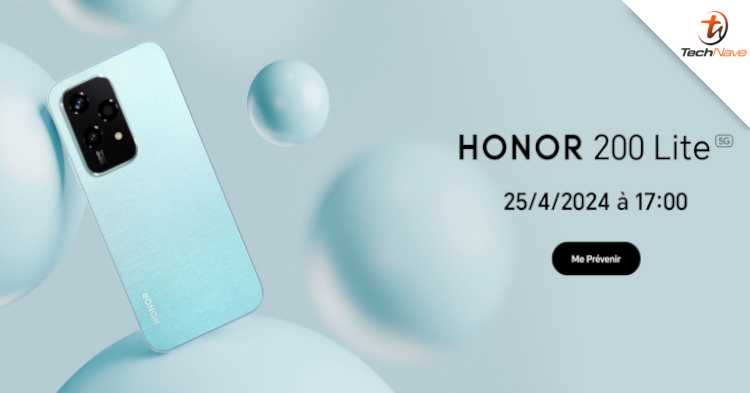



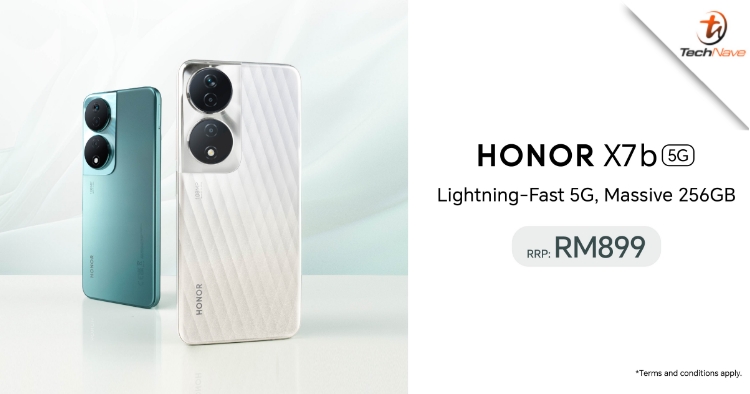

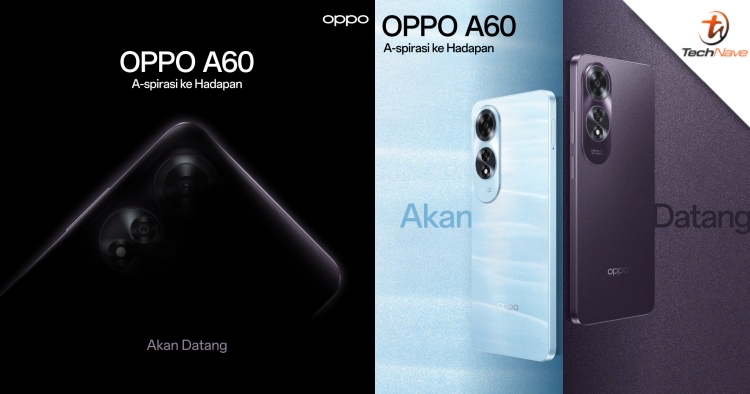




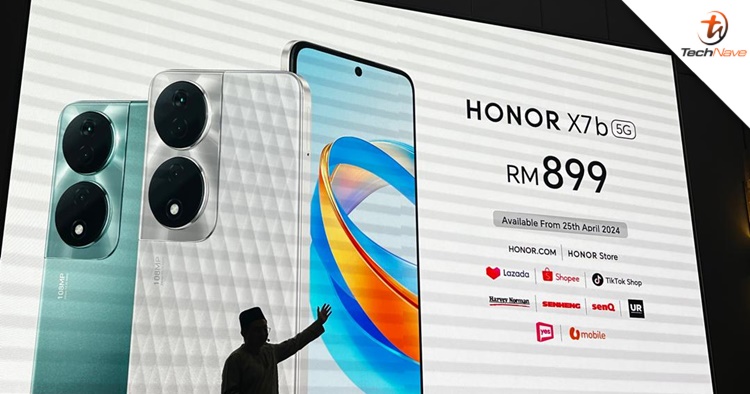
COMMENTS